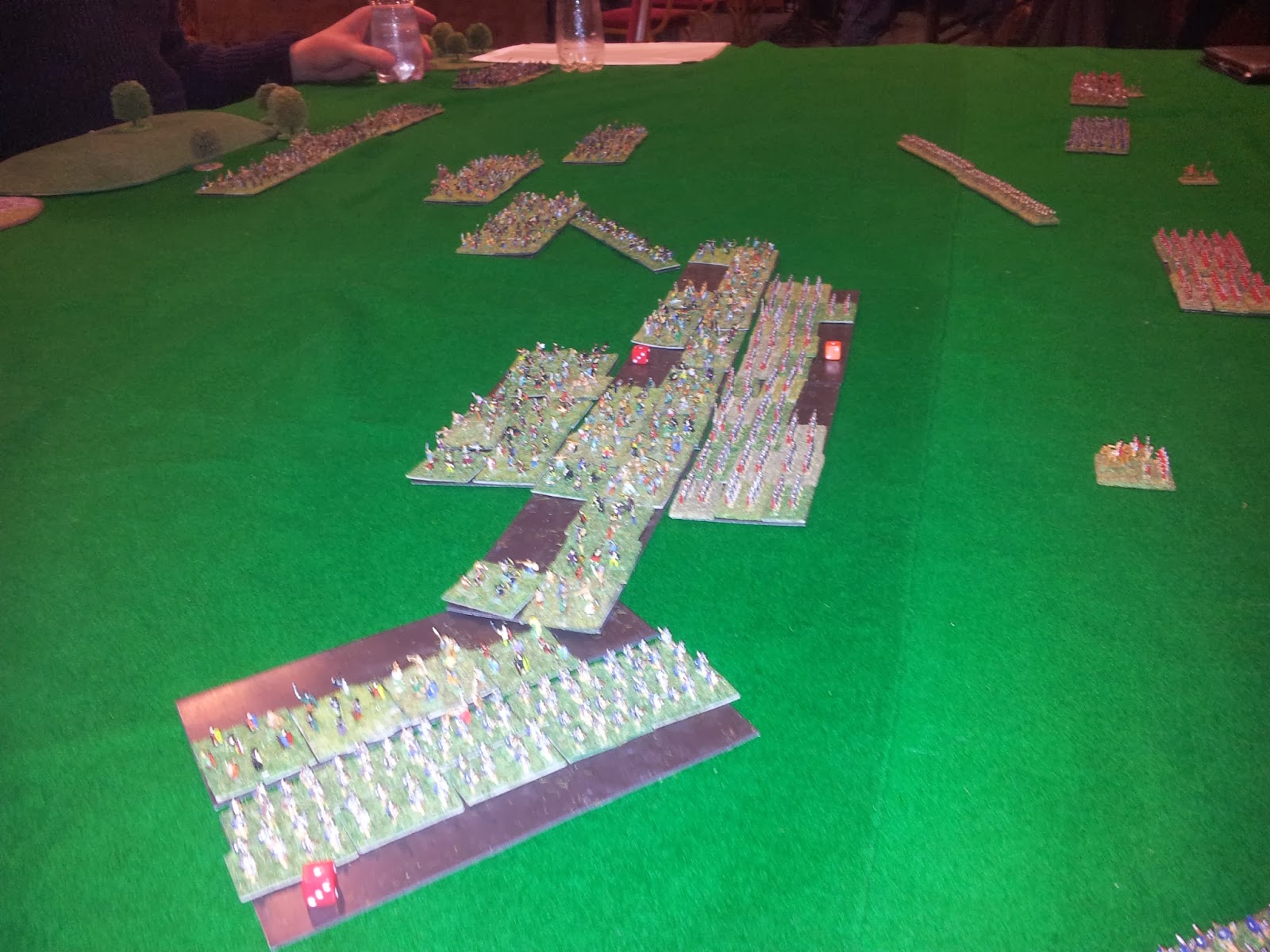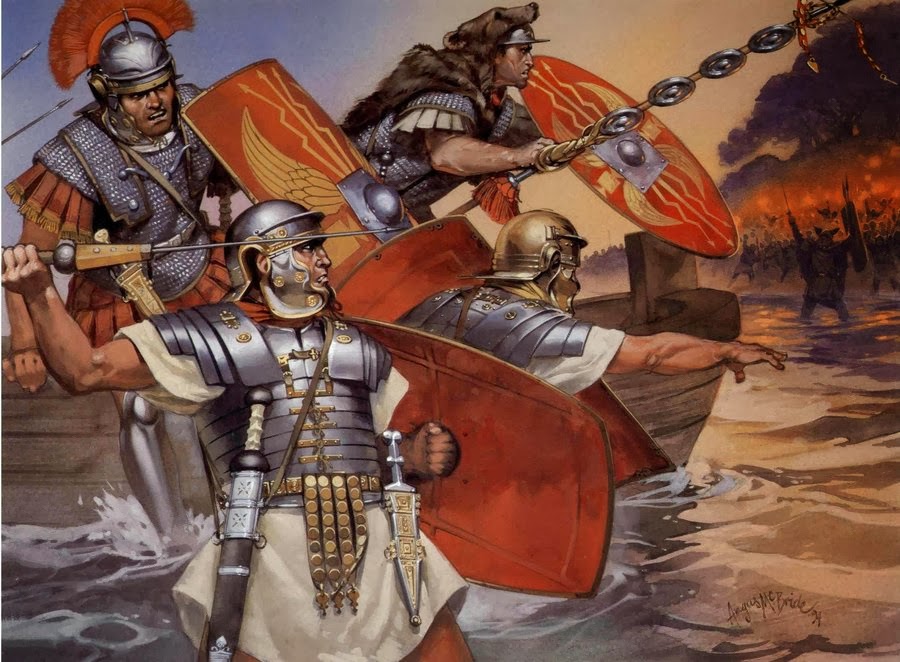The Celts
This month instead of march I will be putting on some ancient battles and I thought I would like to add a theme.
The
Celts (
//, occasionally
//, see
pronunciation of Celtic) or
Kelts were an
ethnolinguistic group of
tribal societies in
Iron Age and
Medieval Europe who spoke
Celtic languages and had a similar culture,
[1] although the relationship between the ethnic, linguistic and cultural elements remains uncertain and controversial.
The earliest archaeological culture that may justifiably be considered
Proto-Celtic is the Late Bronze Age
Urnfield culture of Central Europe, which flourished from around 1200 BC.
[2] Their fully Celtic
[2] descendants in central Europe were the people of the Iron Age
Hallstatt culture (c. 800–450 BC) named for the rich grave finds in
Hallstatt, Austria.
[3] By the later
La Tène period (c. 450 BC up to the Roman conquest), this Celtic culture had expanded by
diffusion or
migration to the
British Isles (
Insular Celts), France and
The Low Countries (
Gauls),
Bohemia, Poland and much of Central Europe, the
Iberian Peninsula (
Celtiberians,
Celtici and
Gallaeci) and
northern Italy (
Golaseccans and
Cisalpine Gauls)
[4] and, following the
Gallic invasion of the Balkans in 279 BC, as far east as central
Anatolia (
Galatians).
[5]
Each week this month the Celts will be taking on a different opponent from the ancient world.
The Romans
The Romans knew the Celts then living in what became present-day France as Gauls. The territory of these peoples probably included the
Low Countries, the Alps and present-day northern Italy.
Julius Caesar in his
Gallic Wars described the 1st-century BC descendants of those Gauls.
Eastern Gaul became the centre of the western La Tène culture. In later Iron Age Gaul, the social organisation resembled that of the Romans, with large towns. From the 3rd century BC the Gauls adopted coinage, and texts with Greek characters from southern Gaul have survived from the 2nd century BC.
Greek traders founded
Massalia about 600 BC, with some objects (mostly drinking ceramics) being traded up the
Rhone valley. But trade became disrupted soon after 500 BC and re-oriented over the Alps to the Po valley in the Italian peninsula. The
Romans arrived in the Rhone valley in the 2nd century BC and encountered a mostly Celtic-speaking Gaul. Rome wanted land communications with its Iberian provinces and fought a major battle with the
Saluvii at
Entremont in 124–123 BC. Gradually Roman control extended, and the
Roman Province of
Gallia Transalpina developed along the Mediterranean coast.
[46][47] The Romans knew the remainder of Gaul as Gallia Comata – "Hairy Gaul".
In 58 BC the
Helvetii planned to migrate westward but Julius Caesar forced them back. He then became involved in fighting the various tribes in Gaul, and by 55 BC had overrun most of Gaul. In 52 BC
Vercingetorix led a revolt against the Roman occupation but was defeated at the
siege of Alesia and surrendered.
Following the Gallic Wars of 58–51 BC, Caesar's
Celtica formed the main part of Roman Gaul, becoming the province of
Gallia Lugdunensis. This territory of the Celtic tribes was bounded on the south by the Garonne and on the north by the Seine and the Marne.
[48] The Romans attached large swathes of this region to neighboring provinces
Belgica and
Aquitania, particularly under
Augustus.
The Greeks
The Celtic military pressure toward Greece in the southern Balkans reached its turning point in 281 BC. The collapse of
Lysimachus' successor kingdom in Thrace opened the way for the migration.
[4] The cause for this is explained by
Pausanias as greed for loot,
[5] by
Justin as a result of overpopulation,
[6] and by
Memnon as the result of famine.
[7] According to
Pausanias, an initial probing raid led by
Cambaules withdrew when they realized they were too few in numbers.
[5] In 280 BC a great army, comprising about 85,000 warriors,
[8] coming from
Pannonia and split into three divisions, marched South in a
great expedition[9][10] to Macedon and
central Greece. Under the leadership of
Cerethrius, 20,000 men moved against the Thracians and Triballi. Another division, led by
Brennus[11] and
Acichorius[12][13] moved against
Paionians while a third division, headed by
Bolgios, aimed for
Macedonians and
Illyrians.
[5]
Bolgios inflicted heavy losses on the Macedonians, whose young king,
Ptolemy Keraunos, was captured and decapitated. However, Bolgios' contingent was repulsed by the Macedonian nobleman
Sosthenes, and satisfied with the loot they had won, Bolgios' contingents turned back. Sosthenes, in turn, was attacked and defeated by Brennus and his division, who were then free to ravage the country.
After these expeditions returned home, Brennus urged and persuaded them to mount a third united expedition against central Greece, led by himself and Acichorius.
[5] The reported strength of the army of 152,000 infantry and 24,400 cavalry is impossibly large.
[14] The actual number of horsemen has to be intended half as big:
Pausanias describes how they used a tactic called
trimarcisia, where each cavalryman was supported by two mounted servants, who could supply him with a spare horse should he have to be dismounted, or take his place in the battle, should he be killed or wounded.
[15][16]
In the East, Persians
The Galatians were in their origin a part of the great
Celtic migration which invaded
Macedon, led by
Brennus. The original Celts who settled in Galatia came through
Thrace under the leadership of Leotarios and
Leonnorios c. 270 BC. These Celts consisted of three tribes, the
Tectosages, the
Trocmii, and the
Tolistobogii
Brennus invaded Greece in 281 BC with a huge war band and was turned back before he could plunder the temple of Apollo at
Delphi. At the same time, another Gaulish group of men, women, and children were migrating through Thrace. They had split off from Brennus' people in 279 BC, and had migrated into Thrace under their leaders Leonnorius and Lutarius. These invaders appeared in
Asia Minor in 278–277 BC; others invaded Macedonia, killed the
Ptolemaic ruler
Ptolemy Ceraunus but were eventually ousted by
Antigonus Gonatas, the grandson of the defeated
Diadoch Antigonus the One-Eyed.
The invaders came at the invitation of
Nicomedes I of
Bithynia, who required help in a dynastic struggle against his brother. Three tribes crossed over from Thrace to Asia Minor. They numbered about 10,000 fighting men and about the same number of women and children, divided into three tribes,
Trocmi,
Tolistobogii and
Tectosages. They were eventually defeated by the
Seleucid king
Antiochus I, in a battle where the Seleucid war elephants shocked the Celts. While the momentum of the invasion was broken, the Galatians were by no means exterminated.
Instead, the migration led to the establishment of a long-lived Celtic territory in central
Anatolia, which included the eastern part of ancient
Phrygia, a territory that became known as Galatia. There they ultimately settled, and being strengthened by fresh accessions of the same clan from Europe, they overran
Bithynia and supported themselves by plundering neighbouring countries.
The Gauls invaded the eastern part of Phrygia on at least one occasion.
[3]
The Carthaginians
Hannibal departed New Carthage in late spring of 218 BC.[22] He fought his way through the northern tribes to the foothills of the Pyrenees, subduing the tribes through clever mountain tactics and stubborn fighting. He left a detachment of 20,000 troops to garrison the newly conquered region. At the Pyrenees, he released 11,000 Iberian troops who showed reluctance to leave their homeland. Hannibal reportedly entered Gaul with 40,000 foot soldiers and 12,000 horsemen.[23]
Hannibal recognized that he still needed to cross the Pyrenees, the Alps, and many significant rivers.[24] Additionally, he would have to contend with opposition from the Gauls, whose territory he passed through. Starting in the spring of 218 BC, he crossed the Pyrenees and, by conciliating the Gaulish chiefs along his passage, reached the River Rhône before the Romans could take any measures to bar his advance. Arriving at the Rhône in September, Hannibal's army numbered 38,000 infantry, 8,000 cavalry, and 37 war elephants, most of which could not survive the harsh conditions.[25]aginians
This should give you a flavour of this months up and coming games
I will be posting a few alteration/clarifications to the ancient rule set later.
Mark



































